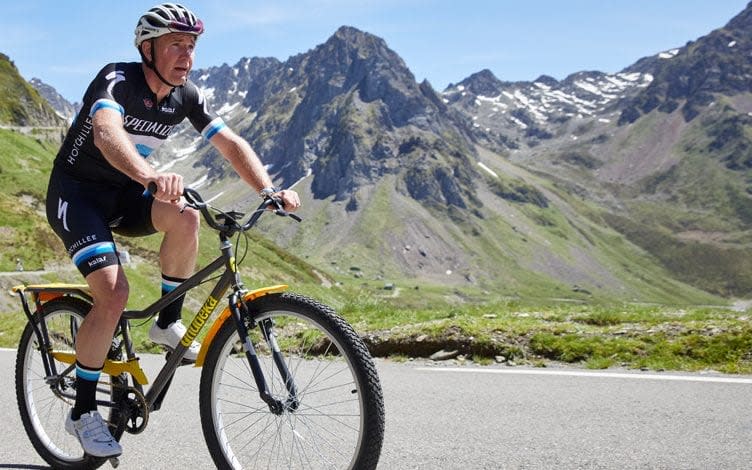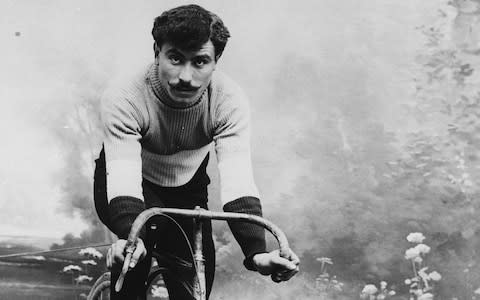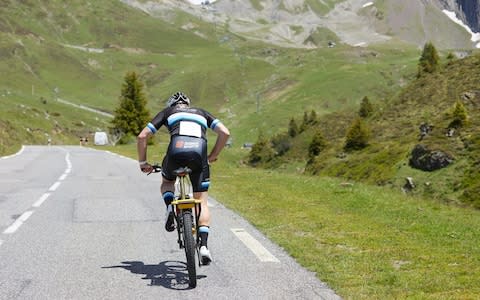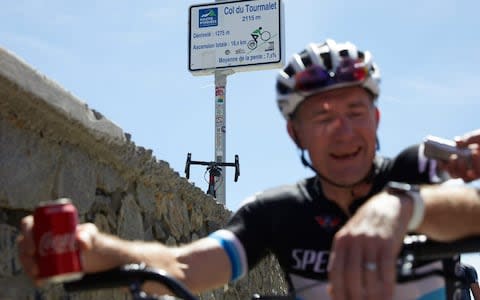Col du Tourmalet – the Tour de France legend where stories are made and lives are changed

Two thousand metres above sea level, the Col du Tourmalet has regularly provided the canvas on which some of the Tour de France's most enduring tales have been told.
Henri Desgrange, the Tour's founding father, thought the Pyrenean pass too difficult to be raced over. The prologue to its story was written when journalist Alphonse Steinès ventured into the high mountains on a mission to prove Desgrange wrong.
In January 1910 Steinès set off on a reconnaissance mission that would change the course of the race's history. Despite failing to reach the snow-covered summit by car and later on foot, after getting to within three kilometres of the top an exhausted and almost frozen Steinès relayed a message to Desgrange telling him it was "perfectly passable".
Six months later, race leader Octave Lapize crested the Tourmalet before letting Steinès and colleague Victor Breyer know exactly what he thought of them. “Vous êtes des assassins! Oui, des assassins!’ ("You are murderers! Yes, murderers!"), he shouted.
When Saturday's stage sets off from Tarbes towards the summit finish on the Tourmalet more stories will be written, though few as evocative as those involving Steinès and Lapize. Many will go unpublished, but somewhere down the road they will be recounted.

From stage winners and lanternes rouge through to amateurs, each and every cyclist to climb the Tourmalet has a story. To ride the Tourmalet is to understand, to get a sense of the pain and suffering Lapize must have endured when tackling the rough gravelly roads on his heavy steel bike with just a single gear on his rear sprocket.
One of those amateurs that perhaps understands the suffering of Lapize more than most is David Bryant, a 49-year-old Australian, who recently rode up the Tourmalet on a single-speed bike. But not just any kind of single-speed bike.
Bryant, who in his spare time works as a ride captain for HotChillee, a company that organises the hugely successful London-Paris and Cape Rouleur events, rode the 19km drag up from Luz-Saint-Sauveur to the summit of the Tourmalet on a 16kg Qhubeka bike during a trip into the Pyrenees last month. To put that into some sort of context, that's the equivalent of a professional – who on Saturday will ride a machine that weighs in at just under 7kg – carrying nine bags of sugar with them, while stuck in one gear. Which begs the question: why? Why would you make one of the toughest climbs in this year's Tour that much tougher for yourself?

The answer lives around 9,000km south of the Pyrenees in the townships of South Africa where the Qhubeka and Buffalo Foundation charities, supported by HotChillee, help mobilise communities by not only providing bicycles, but support and education with the sole aim of changing and improving lives.
In communities where access to education and opportunities are limited the simple bicycle really can change lives and give those faced with seemingly immovable barriers to opportunities the chance to improve themselves. The Buffalo Foundation do more than simply handing out bikes though. Each must be earned, each recipient carefully selected to ensure that each and every penny, dollar or cent generously donated is not wasted.
Speaking on the sun-baked summit, Bryant who has seen first hand the hardship endured by some children and their families in South Africa, was able to put his two hours of pain and suffering into sharp focus. "Life for those kids and the families in Africa that get these bikes, they have lives that are much, much harder than just one bike ride," Bryant told Telegraph Sport.
"This Qhubeka bike – which is not too much heavier than what Lapize would have ridden over a hundred years ago – made this the single hardest climb I have ever done. I've certainly gained a new found respect for the pros from the old days."

After finishing third in Paris in 1910 behind Lapize and François Faber, Gustave Garrigou told Desgrange: "As for your Tourmalet, I climbed it and I must admit that it was an exploit that I'm proud of."
Through raising over £5,750 – enough for around 35 new Qhubeka bikes to be distributed by the Buffalo Foundation – Bryant, like Garrigou over a century before, should be proud of his exploits. In South Africa, as these new bikes open up roads and opportunities – taking their new owners to school, work, hospital or to collect clean water – then soon they, too, will be able to write their own stories. Bicycles, you see, change lives.

